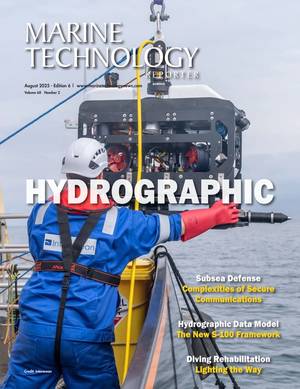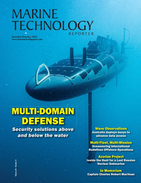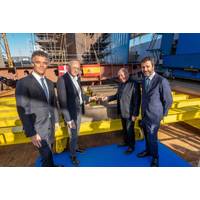
Freire Shipyard Celebrates Keel-Laying of Dana V Research Vessel
at its core. The vessel can operate on either biodiesel or electric batteries, switching between propulsion systems as mission requirements dictate, particularly for operations demanding silent navigation.Dana V will be a multidisciplinary research platform including research on fish stocks, marine ecosystems, ocean currents, and biodiversity variations. The design allows for studies on the interactions between biology, physics, and climate, as well as geological conditions of the seabed and water column.To support these missions, the Dana V will be equipped with advanced systems ensuring high-quali
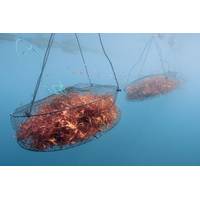
NYK Supports Marine Environment Restoration Project Through Seaweed Bed Initiative
enhancement through the development of cultivated seaweed beds. Utilizing Sea Vegetable’s advanced seaweed cultivation technology, NYK will assist in establishing cultivated seaweed beds along the coast of Oga City in Akita Prefecture, with the goal of ecological recovery and the regeneration of marine resources.A seaweed bed, an area densely populated with seaweed, serves as a crucial "marine nursery" that provides habitat and spawning grounds for various marine organisms. However, in recent years, the decline of seaweed beds has become a serious issue nationwide, largely driven by increased

Lander Lab: Cost Efficiency of Baited Ocean Landers
Determining the diversity and distribution of species in an ecosystem is essential to creating a baseline for monitoring studies or to assess the success of conservation and restoration strategies. The methods for sampling marine and aquatic ecosystems can be inefficient and biased, such as diver operated video, or harmful to the environment and biodiversity, such as bottom trawls and seine nets. Both are time-consuming and expensive. Choosing an efficient and cost-effective sampling method to establish baselines and monitor biodiversity is an important consideration in an ecological study.Two non-invas
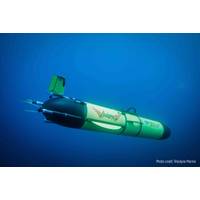
Underwater Autonomous Glider Departs to Circumnavigate the Globe
In a world-first for marine science and technology, Teledyne Marine in collaboration with Rutgers University-New Brunswick, will conduct a mission to circumnavigate the globe with an autonomous underwater glider.Using Teledyne’s ‘Redwing,' the near five-year Sentinel Mission departs on October 10, 2025 following a ceremony at Woods Hole Oceanographic Institution (WHOI), which operates the second largest glider fleet in the world.Launched from the edge of the continental shelf south of Martha’s Vineyard, Massachusetts, the Slocum Sentinel Glider will gather data on ocean

Coral Reef Discovered Off Naples
at a depth of more than 500 metres in the Gulf of Naples, in a rare discovery for the Mediterranean, the Italian Research Council (CNR) said on Friday.Known as the "rainforests of the sea", coral reefs are of great interest to sea scientists as they are among the richest marine ecosystems, hosting millions of species. They play a vital role sustaining marine life, but are under threat.The reef off Naples was found using a remotely operated submarine in the Dohrn Canyon, a deep marine valley just off the coastline of the southern Italian city, by an EU-funded

Scottish Association for Marine Science Launches Crowdfunder to Give Gamers Science Missions
in Oban who use robotics to monitor the marine environment have used their expertise to develop a table-top game based on real-world research.Drones and Droids has been developed by researchers from the Scientific Robotics Academy, operated by environmental charity the Scottish Association for Marine Science (SAMS).SAMS has launched a Crowdfunder to raise USD$21,600 (£16,000) to fund the first production run of the game, which can be used as a science outreach tool for STEM and afterschool clubs, as well as a creative, fun and rewarding challenge for table-top gamers.Drones and Droids is the
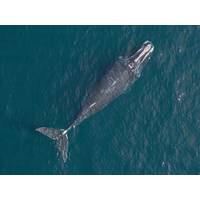
New England Aquarium Researchers Use Drone Technology to Monitor Climate Change Impacts on Whales
to collect body measurements and assess the health of a whale by understanding its condition and growth. The New England Aquarium has been at the forefront of right whale research dating back to the 1980s, making its work and NGOS’ killer whale research two of the longest studies of marine mammals in the world.Photogrammetry can be used to monitor wildlife, like whales. Credit: Véronique LaCapra, Woods Hole Oceanographic Institution; under NMFSResearch Permit #17355“Scientists have decades of population data on both North Atlantic right whales and killer whales in the

Sensitive Mesophotic Ecosystems in Cyprus Threatened by Human Impact
The Marine & Environmental Research (MER) Lab, through the MESOPHOS project, carried out the first exploration of mesophotic ecosystems (50–200 meters) of Akrotiri and Dhekelia in Cyprus, surveying over 32 sites with a remotely operated vehicle (ROV).The surveys revealed extensive assemblages of sponges, corals, anemones, and other benthic organisms that create three-dimensional habitats and support rich marine life.More than 200 species were recorded, including several not previously reported in Cyprus, many of them protected and/or threatened.These mesophotic habitats act as biodiversity
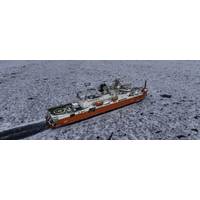
RSV Nuyina Completes Dedicated Marine Science Voyage for the Australian Antarctic Program
The RSV Nuyina, operated by Serco, has returned safely to Hobart after a 9-week dedicated marine science voyage to the Denman Glacier, carrying 85 Australian Antarctic Program expeditioners and 45 crew. In achieving its third 2024/25 season voyage, the Nuyina successfully facilitated research and navigated through harsh environmental conditions, including winds at times reaching 63 knots (116 km/hour), thick ice and frequent periods of very low visibility.The Australian Antarctic Program had previously been unable to access Antarctica’s Denman Glacier—which is of prime scientific interest

 August 2025
August 2025
